#commercial space flight
Text
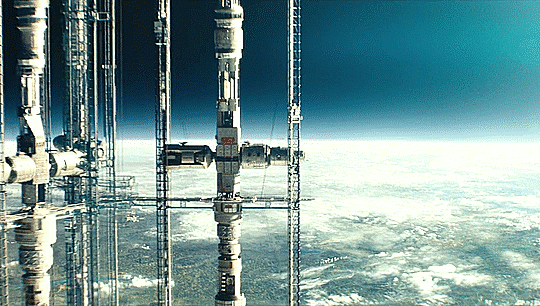

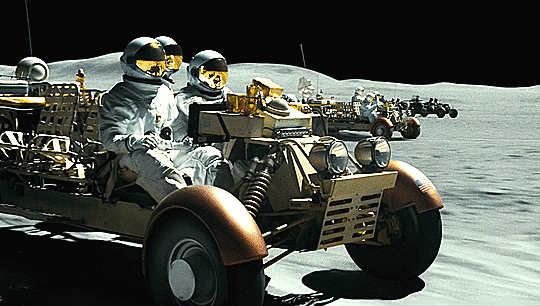





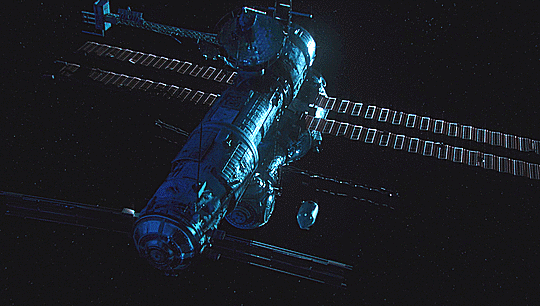
Vehicles and Stations in Ad Astra:
International Space Antenna
Virgin Commercial Flight (under the banner of Virgin Atlantic)
Lunar Rover
Pirate Rover
Cepheus
Vesta IX
Mars Rover
Cepheus Pod
Lima Project
#Ad Astra#Ad Astra 2019#nasapunk#Spaceship#Space Station#Rover#scifi#science fiction#Space Antenna#Commercial Space Flight#Lunar Rover#Mars Rover#movieedit#filmedit#scifiedit#adastraedit#GIF#my gifs#Danny watches Ad Astra#Hide and Queue
149 notes
·
View notes
Text
Sci-fi Pilots
in sci-fi with space flight, you see a strange hybrid of terms, like you have a bunch of nautical terms, like "Hailing" and "Port and Starboard" but you have lots of Aeronautical terms like Pilot and just flying in general, and we know that the type of people who would be in space, would be the kind to have fun with it and probably take these to the logical extremes of either end of the spectrum,
like I want a Spacer that is just fully larping as a 19th century Mariner, just like like they are still in like full futuristic space suit
- completely white hair
- mariners cap
- thick blue peacoat
- even a boatswain's call whistle
and then you have the other end of the spectrum, where they just look like the stereotypical commercial pilot
- aviators
- short sleeved dress shirt
- tie
just like, you see so much of like independent space shipping crews that like i feel like would really just have some fun with it, like, you're in space with like 10 other people for months at a time, you're gonna come up with a bit eventually to pass the time
#humans are space oddities#humans are space orcs#space travel#sci fi#commercial space flight#space flight#space ship#space crew
28 notes
·
View notes
Text
Weird mash of gigglers
Apologies for da weird computer screen effect thing </3



#the first two are gonna be stickers#hal is for my bf#ill show them off when they r made :)#i did the first two in commercial arts the setup felt so professional#so it made me wanna post these#the third one i just thought was neat#magolor#marx#kirby#hal 9000#2001 a space odyssey#coatl#flight rising#dragon#OH the last ones also my magolor fan dragon#he has several outfits tho perhaps ill show them off sometime#bright colors#my art
121 notes
·
View notes
Text

A Commercial Poster (1 of 2) - Sija Hong
30 notes
·
View notes
Text
For @flashfictionfridayofficial

The Pearl
I'm standing in place, like I've done for centuries. I hold my hands out to the front. Carefully hold a small, mostly blue pearl in them. There's also green and brown parts.
The pearl amazes me. And I fear for the time I can't hold it anymore. The pearl doesn't seem to notice my presence, but seems to believe, that it's turning around a bright, yellow, golden, orange pearl, following invisible paths.
I can feel my body wanting me to move again. Soon I tell my body. I can feel how the pearl seems to get heavier, the aching in my arms, the endless white closing in around me.
The pearl is my only color here, if it falls it will break, but if I hold it to long it will be broken by the organisms living their lifes on it, slowly turning their air and water, their life sources into toxic, dangerous mixtures.
I need space, I need more space, I take a deep breath, then open my hands. The pearl will float some time, long enough for me to go away, maybe long enough for its life to find a way to keep it from breaking. I jump around the space, the white void welcoming me back, expanding back, giving me space to walk again.
I wish the pearl all the best, but I can't hold it anymore. I need to walk, need to explore my space, always hoping to find a new space, something not white. There is no sound accompanying me, but the whispers of the space.
#eos-writes#short story#writeblrcafe#flash fiction friday#Yes this pearl symbolises the earth...#The sense to need to save the earth is another reason we need commercial space flight
16 notes
·
View notes
Text
i do unironically still believe chem trails exist.
#i live in military air space deep in the woods#there is no commercial air flight that takes a route above my house#not a single one#the only air traffic we actually get are medical helicopters and fighter jets practicing maneuvers and sonic booms.#and yet a few days a week (literally right after i post anything anti government. every single time.) a plane flies right over my house and#releases their little sprays RIGHT as soon as they get over my house.#and then they stop about a mile or two away from my house.#if it was the result of a commercial plane o a byproduct of regular flight the line would start miles back. but it doesn't. bc it isn't a#natural thing.#chem trails#there is nothing anyone (the government) will ever be able to say to convince me they DONT exist.#literally nothing.#in fact the more i hear 'it's water vapor' the less i believe it.
1 note
·
View note
Link
Join us on a cosmic journey with today's episode of Astronomy Daily - The Podcast, as we explore the most recent and thrilling developments in space exploration. We're taking you from the red sands of Mars, where SpaceX's Starlink could revolutionize interplanetary communications, to the enigmatic far side of the moon, where China's Chang'e 6 probe is making history with its ambitious sample retrieval mission. We'll also venture into the burgeoning realm of commercial space flights, where Virgin Galactic's upcoming mission promises to democratize the awe of zero gravity. And we'll dive into the potential of finding extraterrestrial life through the powerful lens of the James Webb Space Telescope. Buckle up for an interstellar voyage that spans the past, present, and future of our celestial endeavors.1. **Starlink's Martian Ambitions**: SpaceX's bold plan to interconnect our solar system.2. **Chang'e 6's Lunar Quest**: China's groundbreaking mission to the moon's far side.3. **Galactic Zero Seven**: Virgin Galactic's leap towards commercial space tourism.4. **James Webb's Exoplanet Excitement**: A cautious but hopeful look for signs of life.5. **Hayabusa 2's Magnetic Revelations**: Uncovering the ancient history of the solar system through asteroid Ryugu.For an immersive experience of the cosmos, visit our website at astronomydaily.io, and join the stargazing community on X (@AstroDailyPod) for continuous updates and celestial conversations. Until our next stellar encounter, this is Anna reminding you to keep your eyes on the skies and your curiosity ever burning. Clear skies and boundless wonder to all our fellow space enthusiasts! This episode is presented with the support of our cosmic companions at NordPass. Secure your interstellar journey with our special offer by visiting www.bitesz.com/nordpass
#blue#commercial#elon#extraterrestrial#flights#internet#life#lockheed#lunar#martian#martin#missions#musk#nasa#origin#space#spacex#starlink#surface#telescopes
0 notes
Text
Why is ISRO building a second rocket launchport in Tamil Nadu’s Kulasekarapattinam?
The cornerstone for ISRO's second rocket launchpad was laid on February 28 in Kulasekarapattinam, situated in the Thoothukudi district of coastal Tamil Nadu. It will be dedicated solely to commercial, on-demand, and small satellite launches in the future. To know more about Rocket Launch Port in Tamil Nadu, visit: https://competitionpedia.in/…/news-current…/07-03-2024

#ISRO#second rocket launchport#Kulasekarapattinam#Thoothukudi#Satish Dhawan Space Centre (SDSC)#SHAR#Sriharikota#Polar Satellite Launch Vehicle (PSLV)#Geosynchronous Space Launch Vehicles (GSLV)#LVM3#Gaganyaan#human-flight mission#commercial launches#on-demand launches#Small Satellite Launch Vehicles (SSLV)#SSLV-D1#SSLV-D2.
0 notes
Text
Man i hate the new capitalist space race. NASA is starting to need to rely on private companies to conduct research because NASA doesn't have enough funding to do it themselves. Currently, they're looking for commercial private companies (both us based and international) to mine the moon for research into a way astronauts can 'live off the land' on the moon and then later mars. However, these companies are not just in it for research purposes only, a lot of them want to mine the moon for potential commercial uses such as mining helium-3 as well. Once one company does it, we will see a wave of companies going up there to commercially mine for helium-3.
#and thats not even getting into spacex's commercial space flights#space exploration is no longer for the betterment of humanity#but then again i suppose it never was#seeing as how the original space race was fueled by the political dynamics of the cold war#thoughts
0 notes
Text
Trusted Data & the Transition to Real-Time Safety Assurance.
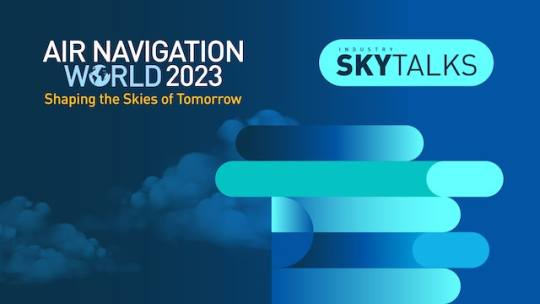
AIR NAVIGATION WORLD 2023 - Shaping the skies of Tommorrow.
Skytalk by Aireon: Trusted Data & the Transition to Real-Time Safety Assurance.
n the next two decades, aviation will witness the emergence of new players and operational demands that are set to fundamentally reshape the airspace system. These changes will be driven by fresh operational paradigms, such as Autonomous Flight, Commercial Space Operations, Integration of Unmanned Aircraft, Sustainability Measures, and Aircraft-in-the-loop operations. Managing and monitoring safe operations amidst these shifts will necessitate innovative concepts and methodologies.
In today's presentation, Chris Devlin, Aireon's Director of Product Management, will discuss the challenges and opportunities associated with establishing real-time safety assurance. This approach aims to enhance operational efficiency, promote environmental responsibility, and maintain the highest safety standards. The discussion will encompass several key themes: The Role of Artificial Intelligence, The Role of Trusted Data, Real-time Risk Assessment, and Predictive Maintenance.
Speaker: Chris Devlin, Director of Product Management, Aireon
#Aireon#international civil aviation day#air navigation world#aviation safety#Autonomous Flight#Commercial Space Operations#Integration of Unmanned Aircraft#Sustainability Measures#Aircraft-in-the-loop operations
0 notes
Text
Private Lessons for Private Spaceflight - Technology Org
New Post has been published on https://thedigitalinsider.com/private-lessons-for-private-spaceflight-technology-org/
Private Lessons for Private Spaceflight - Technology Org
NASA facilities, practices, and spaceflight experience used to train private astronauts.
In April 2022, a crew entirely made up of private astronauts journeyed to the International Space Station aboard a SpaceX Dragon capsule.
While this was a landmark occasion in the history of both the space station and human spaceflight, the training procedures that allowed these individuals to visit the orbiting lab were developed over decades of experience in historic facilities.
A SpaceX Dragon capsule carrying four private astronauts booked through Axiom Space docked to the International Space Station in April 2022. To ensure these astronauts would be able to work in zero gravity and be prepared for any eventuality on the space station, Axiom used NASA facilities and know-how to train them. Image credit: NASA
Axiom Space Inc., based in Houston, was founded in 2016 with the goal of furthering private human spaceflight and ultimately establishing a privately operated permanent human presence in space. Shortly after the company’s founding, it entered into an agreement with SpaceX to provide launch services for visiting the space station.
Axiom’s first mission, known as Axiom Mission 1 (Ax-1), launched from Cape Canaveral carrying a crew of four individuals, representing four countries and two different levels of training.
“We have two different classifications: private astronauts and professional astronauts,” said Matt Ondler, chief technology officer and director of engineering for Axiom.
“Private astronauts are either from countries that don’t participate in the space station or they might be from companies that want to further their research objectives and further their potential for commercial manufacturing in orbit.”
Mark Pathy, one of Axiom Space’s private astronauts, trains in a replica of the International Space Station at Johnson Space Center’s Vehicle Mockup Facility prior to the launch of Ax-1. Image credit: Axiom Space Inc.
While Axiom’s professionals are former NASA astronauts like Michael López-Alegría and Peggy Whitson, the private astronauts start with little or no training at all. For Ax-1, these included CEOs, former fighter pilots, and an amateur race car driver.
As such, these astronauts required instruction to be able to live and work on the space station. To do that, they needed to train with those experienced in it.
In 2008, David Wiedmeyer started working in the Mission Control Center at NASA’s Johnson Space Center in Houston as a flight control operator. During his tenure, Wiedmeyer became certified to work in training for astronauts and mission control specialists for private spaceflights.
The Space Vehicle Mockup Facility at Johnson Space Center contains replicas of NASA spacecraft and space station modules. This facility is used to train both NASA astronauts and private Axiom Space astronauts for future spaceflights. Image credit: NASA
Moving to the Office of the Chief Training Officer, he coached new employees on the same systems he worked on when assisting regular operations at the space station. In 2018, Wiedmeyer left NASA and became chief of flight operations and training at Axiom. Like Wiedmeyer, a large contingent of Axiom’s employees held positions at NASA before going to the private sector, including Ondler.
“At NASA, we certainly got a lot of opportunities to work on really hard problems and lean forward in terms of technology development,” Ondler said. “It’s a great training ground for engineers and for folks who are trying to do things in space.”
Training for Ax-1 spaceflights used several facilities at Johnson, from full capsule simulators to mockups of space station modules. Axiom also contracted with KBR, a government services provider that helps train NASA astronauts, which provided Axiom with some of the same training workforce NASA has.
Axiom is slated to make additional spaceflight trips to the space station with SpaceX, with private astronauts coming from around the world to perform research, conduct outreach, and other activities.
During their seven days in orbit, the Ax-1 astronauts conducted biological research into brain function and heart conditions and tested technology for constructing habitats in space, something they wouldn’t have been able to do without the proper training.
Source: NASA
You can offer your link to a page which is relevant to the topic of this post.
#2022#astronauts#Brain#commercial space#Companies#development#employees#engineering#engineers#Experienced#Featured Space news#flight#flight control#Full#Future#Government#gravity#heart#History#how#how to#human#International Space Station#it#Link#Manufacturing#Mockups#NASA#One#orbit
0 notes
Text

What We Learned from Flying a Helicopter on Mars
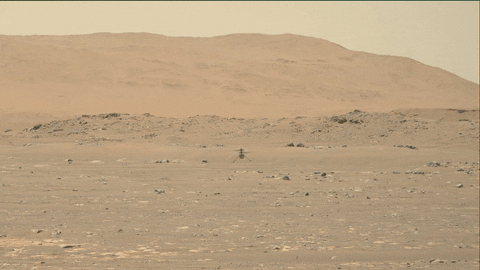
The Ingenuity Mars Helicopter made history – not only as the first aircraft to perform powered, controlled flight on another world – but also for exceeding expectations, pushing the limits, and setting the stage for future NASA aerial exploration of other worlds.
Built as a technology demonstration designed to perform up to five experimental test flights over 30 days, Ingenuity performed flight operations from the Martian surface for almost three years. The helicopter ended its mission on Jan. 25, 2024, after sustaining damage to its rotor blades during its 72nd flight.
So, what did we learn from this small but mighty helicopter?
We can fly rotorcraft in the thin atmosphere of other planets.
Ingenuity proved that powered, controlled flight is possible on other worlds when it took to the Martian skies for the first time on April 19, 2021.
Flying on planets like Mars is no easy feat: The Red Planet has a significantly lower gravity – one-third that of Earth’s – and an extremely thin atmosphere, with only 1% the pressure at the surface compared to our planet. This means there are relatively few air molecules with which Ingenuity’s two 4-foot-wide (1.2-meter-wide) rotor blades can interact to achieve flight.
Ingenuity performed several flights dedicated to understanding key aerodynamic effects and how they interact with the structure and control system of the helicopter, providing us with a treasure-trove of data on how aircraft fly in the Martian atmosphere.
Now, we can use this knowledge to directly improve performance and reduce risk on future planetary aerial vehicles.

Creative solutions and “ingenuity” kept the helicopter flying longer than expected.
Over an extended mission that lasted for almost 1,000 Martian days (more than 33 times longer than originally planned), Ingenuity was upgraded with the ability to autonomously choose landing sites in treacherous terrain, dealt with a dead sensor, dusted itself off after dust storms, operated from 48 different airfields, performed three emergency landings, and survived a frigid Martian winter.
Fun fact: To keep costs low, the helicopter contained many off-the-shelf-commercial parts from the smartphone industry - parts that had never been tested in deep space. Those parts also surpassed expectations, proving durable throughout Ingenuity’s extended mission, and can inform future budget-conscious hardware solutions.

There is value in adding an aerial dimension to interplanetary surface missions.
Ingenuity traveled to Mars on the belly of the Perseverance rover, which served as the communications relay for Ingenuity and, therefore, was its constant companion. The helicopter also proved itself a helpful scout to the rover.
After its initial five flights in 2021, Ingenuity transitioned to an “operations demonstration,” serving as Perseverance’s eyes in the sky as it scouted science targets, potential rover routes, and inaccessible features, while also capturing stereo images for digital elevation maps.
Airborne assets like Ingenuity unlock a new dimension of exploration on Mars that we did not yet have – providing more pixels per meter of resolution for imaging than an orbiter and exploring locations a rover cannot reach.

Tech demos can pay off big time.
Ingenuity was flown as a technology demonstration payload on the Mars 2020 mission, and was a high risk, high reward, low-cost endeavor that paid off big. The data collected by the helicopter will be analyzed for years to come and will benefit future Mars and other planetary missions.
Just as the Sojourner rover led to the MER-class (Spirit and Opportunity) rovers, and the MSL-class (Curiosity and Perseverance) rovers, the team believes Ingenuity’s success will lead to future fleets of aircraft at Mars.
In general, NASA’s Technology Demonstration Missions test and advance new technologies, and then transition those capabilities to NASA missions, industry, and other government agencies. Chosen technologies are thoroughly ground- and flight-tested in relevant operating environments — reducing risks to future flight missions, gaining operational heritage and continuing NASA’s long history as a technological leader.
youtube
You can fall in love with robots on another planet.
Following in the tracks of beloved Martian rovers, the Ingenuity Mars Helicopter built up a worldwide fanbase. The Ingenuity team and public awaited every single flight with anticipation, awe, humor, and hope.
Check out #ThanksIngenuity on social media to see what’s been said about the helicopter’s accomplishments.
youtube
Learn more about Ingenuity’s accomplishments here. And make sure to follow us on Tumblr for your regular dose of space!
4K notes
·
View notes
Text
find it sooo funny that there are 4 British f1 drivers and all of them live in Monaco to dodge Uk tax. And they’ll all be like “I’m so proud to be British 😁” WHAT ABT THE NHS THEN
#I mean they all pay British tax bc they work for teams based in the uk but the avoid paying the pull amount#* full amount#and they’ll say stuff like it’s easier for transport links like fuck it isn’t your living in a country without an airport 😭#living in Oxfordshire near your company has way better airport links#but what they actually mean is there’s more people in the vicinity to share private jet journeys with 🤣#so they just compound their reliance on private jets by living somewhere without easy commercial passenger flights to where they need to go#SCREAM it makes me just a little livid#and voluntarily living in an absolute fishbowl of a country with no space#once again one of my cousins is like an a list actor and lives in rural Oxfordshire and no one bothers him bc it’s rural Oxfordshire 😭😭
1 note
·
View note
Text
Commercial Space Success!
View On WordPress
0 notes
Text
thrown and flown
damn, could illinois do anything ri?
#hurricanes#tornadoes#worlds worst air pollution#sky high crime rate#teen mobs#corruption#social cancer#homelessness surge#corporate flight#el chapo#vacant office space#commercial real estate default#gen zombie
0 notes